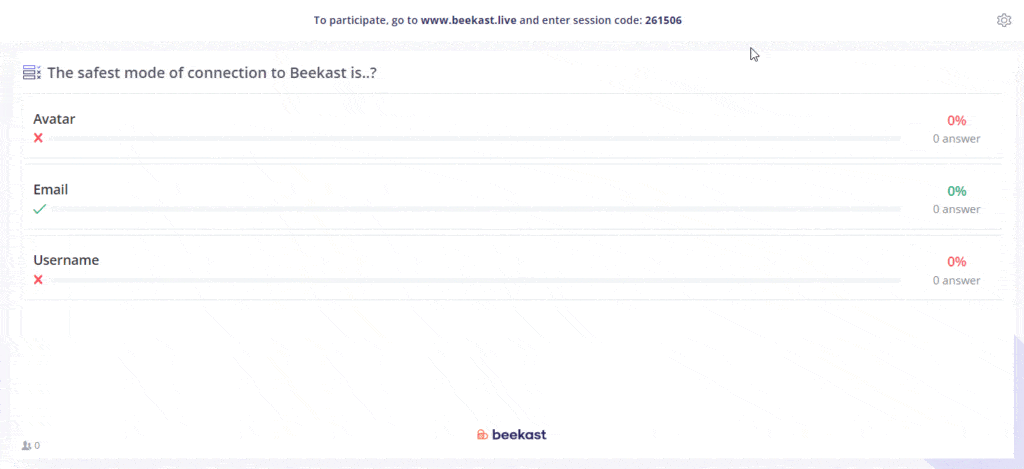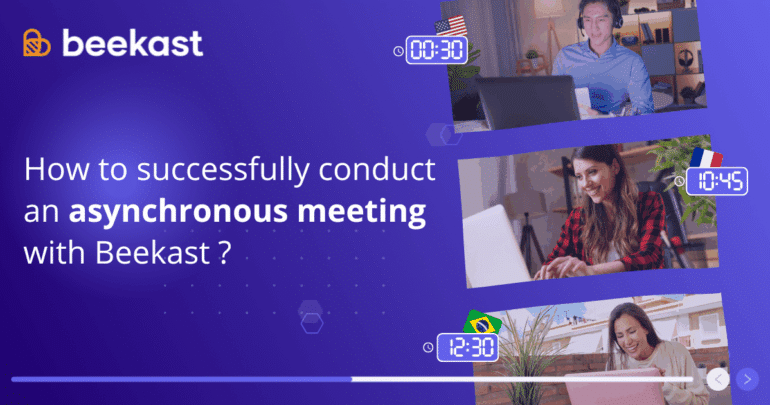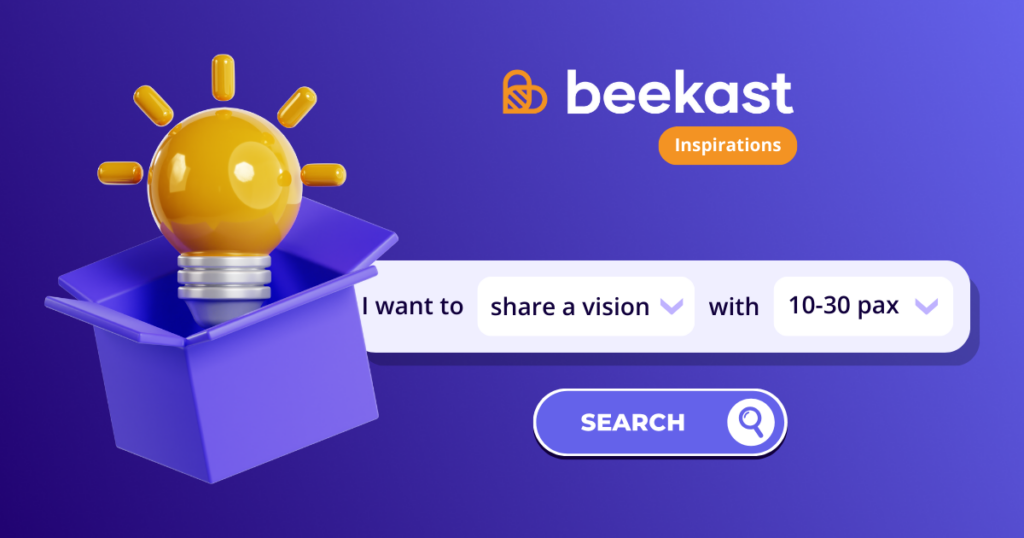Asynchronous meetings offer participants the flexibility to log in and attend at their convenience, allowing each person to participate at their own pace and on their own schedule. This approach is especially valuable for teams that practice hybrid work or have members in different time zones. Additionally, the asynchronous format provides participants with the chance to reflect and refine their ideas before sharing them with others.
To facilitate successful asynchronous collaboration, the Beekast platform provides precisely this mode of facilitation. So, how can you ensure that your asynchronous meetings using Beekast are a success?
6 steps to succeed in an asynchronous meeting with Beekast:
To promote asynchronous communication among your colleagues, Beekast suggests following these steps:
- Share the meeting objective: Defining the objective of the meeting in advance enables you to plan the meeting structure effectively and helps participants understand what is expected of them.
By clearly sharing this objective, participants can prepare themselves to contribute in a productive and meaningful manner, thereby avoiding any misunderstandings or confusion that could hinder the meeting’s effectiveness.
Use the “Board” activity to specify the objectives of your session, which will be displayed as virtual sticky notes. This way, your colleagues can consult them whenever they want and collaborate together to achieve a common goal.
- Providing context: As participants in asynchronous meetings are not able to communicate in real-time, lack of clarity in conveying information can result in confusion and wasted time. Therefore, it is crucial to provide enough context to enable participants to understand the topics that will be discussed and contribute to them in a relevant manner.
Beekast’s “tabs” feature allows you to share a library of useful information, which can help guide discussions in a productive direction. This way, you can ensure that colleagues are aligned and share a better understanding of the meeting topic.
- Setting deadlines: It is always important to set a deadline for making decisions or completing tasks. By setting clear deadlines, team members are more likely to focus on their tasks and work effectively to achieve the meeting’s objectives.
Deadlines are also useful for maintaining a pace and tracking progress in a project.
In Beekast, you have the “Actions and Decisions” feature where you can notify participants of their assigned tasks and set deadlines that they must adhere to. You can also generate an action plan that will be automatically shared by email. - Inviting participants: Sending a meeting invitation to participants is a great way to inform them of the meeting’s details, such as the topic, agenda, and deadlines. This ensures that participants are prepared and can contribute effectively to the session.
To ensure a smooth running of the meeting, it is also essential to provide specific instructions for each interactive activity that is included in the session. This way, participants are clear on how to engage with each activity and what is expected of them. It’s also important to note that broader instructions can be shared through other communication tools in addition to the meeting invitation. By doing so, you can ensure that the meeting runs efficiently and that everyone is on the same page.
- Preparing activities: Make sure to plan Beekast activities that best serve the meeting’s objectives. For example, if your meeting is about implementing a new marketing strategy, opt for the “Ansoff Matrix” inspirational template to explore and reflect together.
Or if you want to plan the completion of a project, the “Metaphor” activity will be very useful in fostering exchanges and generating ideas within your team. You have several inspirational templates such as the rocket or hot air balloon that will help you lead a creative brainstorming session.
Don’t forget to give very clear instructions on how to properly perform the activities. Feel free to add some sample responses to the activities so that early participants have a better understanding of the type of content and format expected.
- Ensuring regular follow-up: Asynchronous meetings require regular follow-up because participants are not all present at the same time, and communication can be difficult as participants cannot provide immediate responses to questions posed by others. Therefore, it’s important to establish a follow-up plan to ensure that participants can continue to contribute and communicate effectively after the meeting.
Use Beekast’s “Journey view” feature, which allows you to track the progress of your participants.

If a participant has not completed their contributions or has not yet participated in the session, you will be able to follow up with them or schedule a face-to-face conversation to understand the reasons for their delay or abstention.
In today’s working world, asynchronous meetings remain an effective solution for saving time and increasing efficiency in the workplace. They allow you to save time by avoiding lengthy and unproductive physical meetings.
With Beekast, you can efficiently organize asynchronous meetings, offer your team greater flexibility, and help them better optimize their work time.

